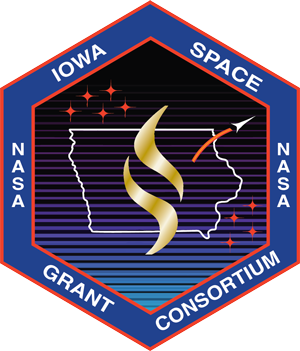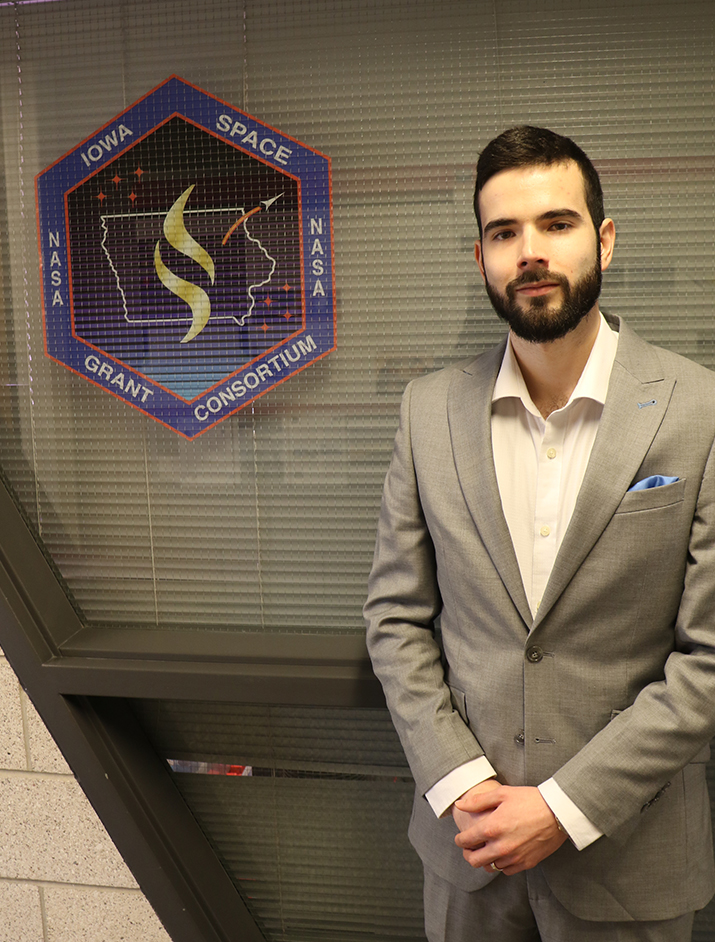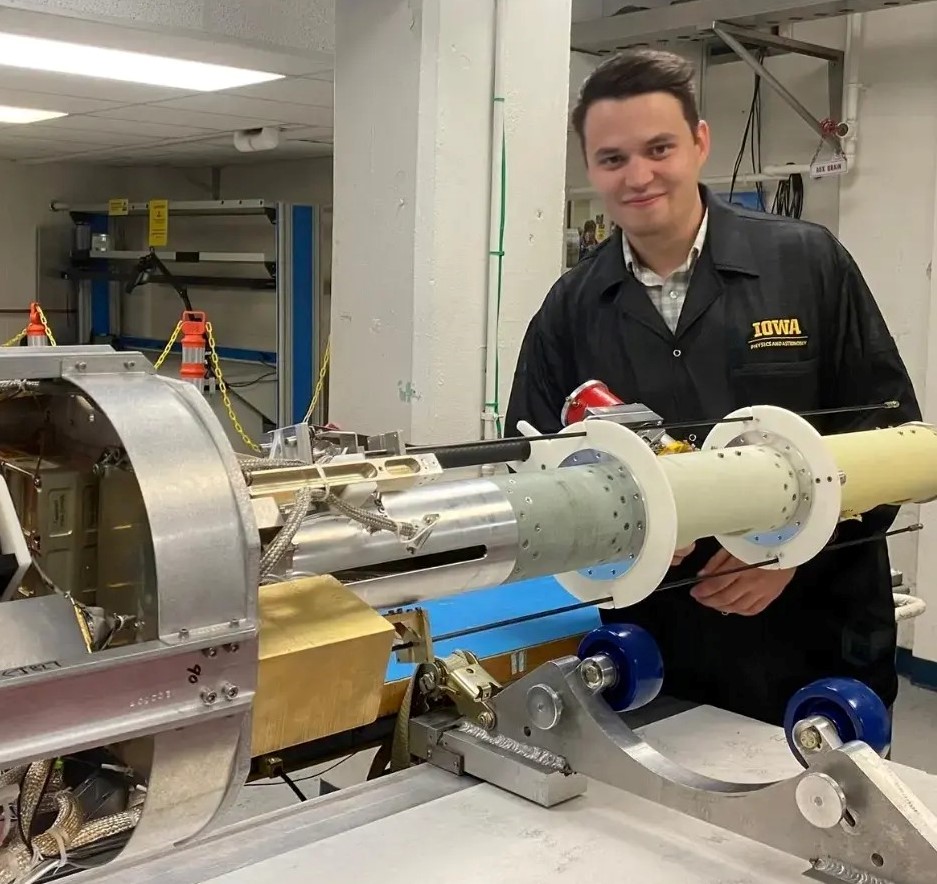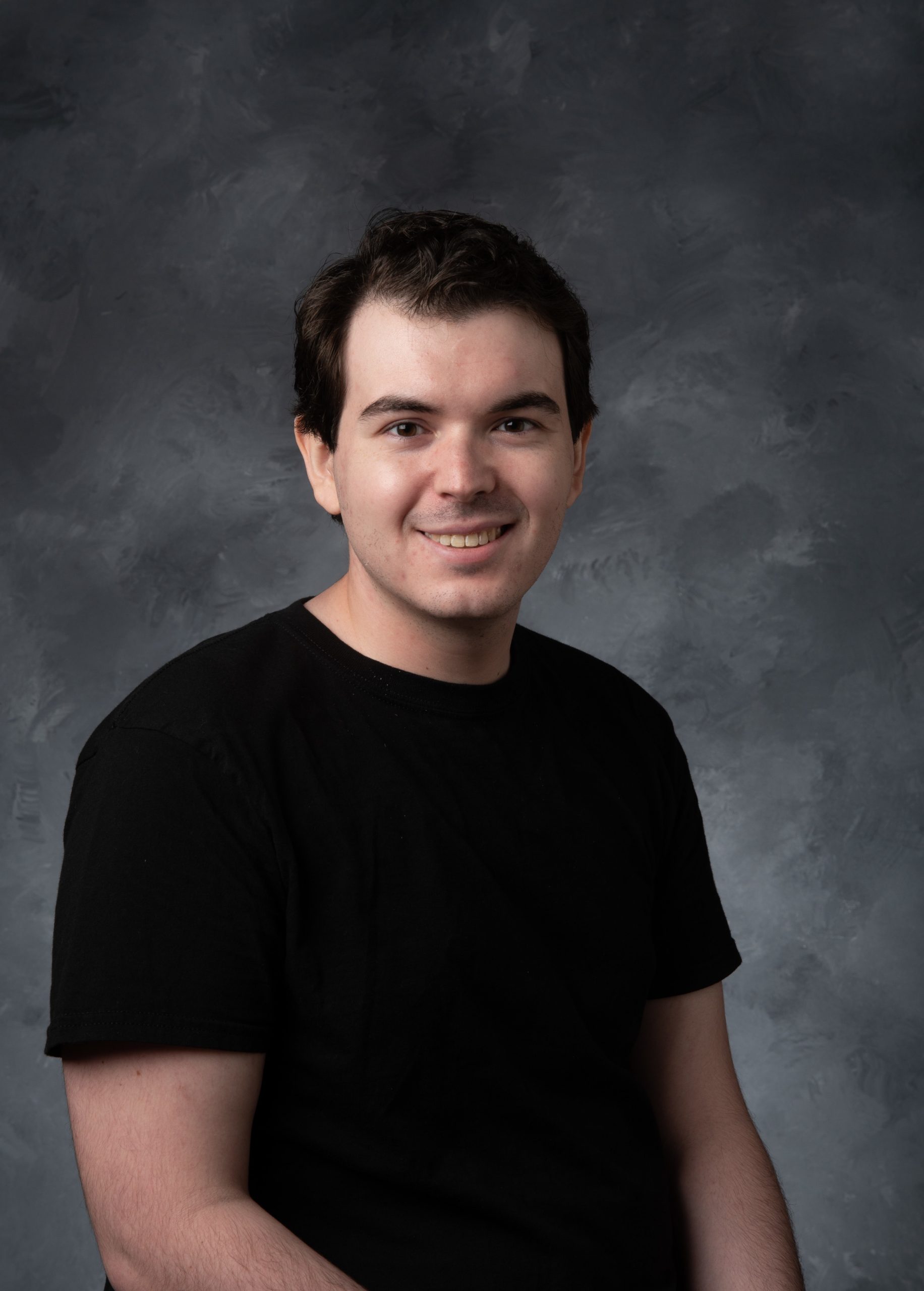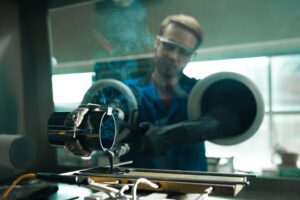 My research focuses on the synthesis and development of glassy solid-state electrolytes for use in solid-state lithium-ion batteries. I am working to develop novel glass compositions that exhibit high ionic conductivities, excellent electrochemical stability, and easy low-temperature processing. These novel compositions are being made in large-scale batches to generate a rectangular preform, which I then reheat and pull into a thin film less than 100 microns in thickness, through the glass redraw process. Concurrently, I am working to develop a composite cathode, utilizing sulfur, glassy solid-state electrolytes, and conductive carbon to generate a highly energy dense sulfur cathode to be paired with a lithium metal anode for superior volumetric and gravimetric energy density compared to current lithium-ion batteries utilizing intercalation cathodes. I hope to generate several successful full-cell all-solid-state lithium-ion batteries utilizing my composite sulfur cathode, a drawn thin film glassy solid-state electrolyte, and a lithium metal anode. This project relates to the NASA mission for the Space Technology Directorate through the need for highly energy dense, long-lasting batteries for use in nearly all space missions.
My research focuses on the synthesis and development of glassy solid-state electrolytes for use in solid-state lithium-ion batteries. I am working to develop novel glass compositions that exhibit high ionic conductivities, excellent electrochemical stability, and easy low-temperature processing. These novel compositions are being made in large-scale batches to generate a rectangular preform, which I then reheat and pull into a thin film less than 100 microns in thickness, through the glass redraw process. Concurrently, I am working to develop a composite cathode, utilizing sulfur, glassy solid-state electrolytes, and conductive carbon to generate a highly energy dense sulfur cathode to be paired with a lithium metal anode for superior volumetric and gravimetric energy density compared to current lithium-ion batteries utilizing intercalation cathodes. I hope to generate several successful full-cell all-solid-state lithium-ion batteries utilizing my composite sulfur cathode, a drawn thin film glassy solid-state electrolyte, and a lithium metal anode. This project relates to the NASA mission for the Space Technology Directorate through the need for highly energy dense, long-lasting batteries for use in nearly all space missions.
Alexander Perruci – Iowa State University
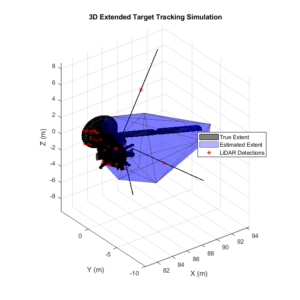 My current work is concerned with Light Detection and Ranging (LiDAR) sensing for spacecraft rendezvous maneuvers. Although LiDAR has been used in spacecraft relative navigation for decades, existing methods require target-mounted reflectors to identify and track the target. In many cases, such as spacecraft debris removal, on-orbit servicing, and asteroid rendezvous, navigational aids may be unavailable. An improved image processing algorithm is needed to enable LiDAR-based navigation in these situations. Extended target tracking (ETT), defined as the estimation of the extent and kinematics of one or more objects in a surveillance region based on sparse sets of sensor measurements collected over time, has the potential to supply navigational information for spacecraft. Multiple researchers have developed ETT algorithms for autonomous driving, but cars are constrained to 3 degrees of freedom. This project seeks to develop a novel 6-degree-of-freedom ETT algorithm for spacecraft relative navigation. The resulting technology will extract more navigational information from on-orbit LiDAR measurements than previously possible by tracking the shape, pose, and kinematics of target satellites in 3D.
My current work is concerned with Light Detection and Ranging (LiDAR) sensing for spacecraft rendezvous maneuvers. Although LiDAR has been used in spacecraft relative navigation for decades, existing methods require target-mounted reflectors to identify and track the target. In many cases, such as spacecraft debris removal, on-orbit servicing, and asteroid rendezvous, navigational aids may be unavailable. An improved image processing algorithm is needed to enable LiDAR-based navigation in these situations. Extended target tracking (ETT), defined as the estimation of the extent and kinematics of one or more objects in a surveillance region based on sparse sets of sensor measurements collected over time, has the potential to supply navigational information for spacecraft. Multiple researchers have developed ETT algorithms for autonomous driving, but cars are constrained to 3 degrees of freedom. This project seeks to develop a novel 6-degree-of-freedom ETT algorithm for spacecraft relative navigation. The resulting technology will extract more navigational information from on-orbit LiDAR measurements than previously possible by tracking the shape, pose, and kinematics of target satellites in 3D.
The first step of this project was to generate synthetic LiDAR data by simulating a spacecraft rendezvous scenario. Currently, I am adapting an established ETT algorithm to track the simulated spacecraft. This research is in response to NASA Technology Area 5.4.3: Sensors and Vision Processing Systems. It is directly applicable to the NASA Space Operations Mission Directorate, enhancing rendezvous maneuvers in space transportation and making exploration safer with detailed space debris information. This work will also contribute to the NASA Space Technology Mission Directorate, as it applies to navigation in orbit around the Moon or Mars.
Kristie Nault – University of Iowa
My research focuses on the symbiotic star system AG Draconis (AG Dra), which consists of a red giant star and white dwarf. Most stars are low-mass and will go through each of these evolutionary phases at the ends of their lives, and stars are also commonly born in binaries. However, despite supposedly being common, high-quality observations of these stars in the high energy part of the electromagnetic spectrum remain a rarity, since soft X-ray spectra are easily absorbed by interstellar material. With the lack of observations and data, fundamental questions regarding these stars remain unanswered, including the origin and variation of the soft X-rays and the final outcome for these systems. Better knowledge of symbiotic stars may be the key to understanding the progenitors of Type Ia supernovae and the last stage in evolution for the majority of binary star systems. Under the guidance of Dr. Casey DeRoo, my research seeks to directly address these major open questions. I am analyzing high-resolution spectral data for AG Dra by the Chandra X-ray Observatory and Hubble Space Telescope, utilizing two of NASA’s great observatories in tandem for a deeper understanding of these types of stars. This research relates to the mission of NASA’s Astrophysics Division of the Science Mission Directorate because my work seeks to understand this common stellar system and the progenitor systems for Type Ia supernovae, which are an important cosmological distance marker.
Sarah Henderson – University of Iowa
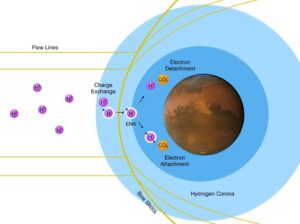 This research project focuses on how the solar wind interacts with the Martian atmosphere. As solar wind protons propagate towards Mars, they can interact with Mars’s extensive hydrogen corona through a process of charge exchange. These solar wind protons can obtain an electron from neutral atomic hydrogen in the corona, becoming fast energetic neutral atoms (ENAs) that maintain upstream solar wind velocity. These ENAs can bypass electromagnetic boundaries around the planet and penetrate to altitudes of ~130 km in the Martian atmosphere. Along their path of propagation, ENAs can undergo multiple charge-changing collisions as they interact with atmospheric neutrals (primarily CO2), resulting in observable beams of H+ and H– in the collisional atmosphere of Mars. The goal of this project is to characterize the properties of H– and H+ energy spectra in order to better understand charge exchange processes in the Martian atmosphere.
This research project focuses on how the solar wind interacts with the Martian atmosphere. As solar wind protons propagate towards Mars, they can interact with Mars’s extensive hydrogen corona through a process of charge exchange. These solar wind protons can obtain an electron from neutral atomic hydrogen in the corona, becoming fast energetic neutral atoms (ENAs) that maintain upstream solar wind velocity. These ENAs can bypass electromagnetic boundaries around the planet and penetrate to altitudes of ~130 km in the Martian atmosphere. Along their path of propagation, ENAs can undergo multiple charge-changing collisions as they interact with atmospheric neutrals (primarily CO2), resulting in observable beams of H+ and H– in the collisional atmosphere of Mars. The goal of this project is to characterize the properties of H– and H+ energy spectra in order to better understand charge exchange processes in the Martian atmosphere.
Thus far, we have implemented electron and ion data collected over seven years by the Solar Wind Electron Analyzer (SWEA) and Solar Wind Ion Analyzer (SWIA) onboard the Mars Atmosphere and Volatile EvolutioN (MAVEN) spacecraft and have found some interesting behaviors. We have observed seasonal increases in the H+ and H– fluxes congruent with perihelion and Mars’s dust season, in addition to a turnover in the ratio of the H+ and H– fluxes at a particular point within Mars’s atmosphere. We have also found that this seasonal enhancement is stronger for H+ and are seeking to better understand the underlying cause of this behavior by examining hydrogen column densities, solar radiation input, and bow shock position.
Kenton Greene – University of Iowa
Fluxgate magnetometers are important tools for measuring space plasmas. However, fluxgate baseline measurements are known to drift over time. This instability can make it difficult to resolve magnetic features like planetary crustal fields which are important to understanding planetary geology. My research focuses on characterizing a new design for a fluxgate magnetometer called the Tesseract that looks promising for making stable, reliable magnetic field measurements in a space environment. Tesseract was flight demonstrated on the ACES-II sounding rockets. This project will focus on a detailed characterization of Tesseract’s performance, both in the laboratory using specialized testing equipment, and in space over the course of the rocket flight.
David Fehr – University of Iowa
Solid-state magnetometers have recently stimulated interest due to their smaller size, weight, and power (SWaP) compared to existing magnetometers, and their potential to self-calibrate without expensive spacecraft maneuvers; two attractive features which help conserve spacecraft fuel. However, extensive research must be completed to optimize this new technology, and a detailed theory is the first step.
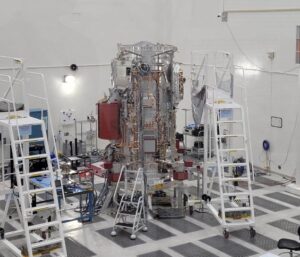 This project is a continuation of my summer 2022 internship experience at the Jet Propulsion Laboratory, made possible by the JPL Visiting Student Research Program (JVSRP). Mentored by Dr. Hannes Kraus and Dr. Corey Cochrane at JPL and my advisor, Dr. Michael Flatté, I developed a preliminary model of OPuS-MAGNM, a cutting-edge optically pumped magnetometer which uses the spin of a single silicon vacancy (VSi) in silicon carbide (SiC) as a quantum sensor of magnetic fields, using density matrix formalism and Lindblad master equations. In addition to fuel conservation, the inexpensive and simple mechanism of OPuS-MAGNM is advantageous over its state-of-the-art but expensive, optically pumped contemporaries, whose chambers of atomic gas inevitably leak.
This project is a continuation of my summer 2022 internship experience at the Jet Propulsion Laboratory, made possible by the JPL Visiting Student Research Program (JVSRP). Mentored by Dr. Hannes Kraus and Dr. Corey Cochrane at JPL and my advisor, Dr. Michael Flatté, I developed a preliminary model of OPuS-MAGNM, a cutting-edge optically pumped magnetometer which uses the spin of a single silicon vacancy (VSi) in silicon carbide (SiC) as a quantum sensor of magnetic fields, using density matrix formalism and Lindblad master equations. In addition to fuel conservation, the inexpensive and simple mechanism of OPuS-MAGNM is advantageous over its state-of-the-art but expensive, optically pumped contemporaries, whose chambers of atomic gas inevitably leak.
Zachary Burton – Iowa State University
My research involves the investigation of the roles that microbial biofilms have in metal corrosion. Since the beginning of the Space Program in 1962, NASA has been combating corrosion. This is especially true for the launch equipment at the Kennedy Space Center that is subjected to exposure to salinity through ocean spray and fog. To combat this, current corrosion protection protocols employ the use of corrosion resistant materials, organic coatings, corrosion inhibitors, and electrochemical protection agents. These methods come at high monetary cost, and can lead to heavy environmental contamination. One alternative method that could be employed to combat this problem is the development of a microbiologically influenced corrosion inhibiting (MICI) biofilm that is applied directly onto metal surfaces as a protective layer.
Biofilms are biological systems that have the ability to accomplish multiple functions, and are both self-healing and adaptive especially when composed of complex microbial communities. Currently, I have am comparing the corrosion outcomes of steel and aluminum surfaces with environmental biofilms grown from various local soil/water sources and pure culture biofilms such as Bacillus cereus, Shewanella putrefaciens, and Pseudomonas fluorescens. Overall, our results will shed light on the complex interactions between naturally occurring microbial biofilms and metal surfaces with a focus on corrosion outcomes. By filling this critical knowledge gap, we will be able to develop a novel 3D printed self-healing biofilm made up of multiple species of MICI bacteria to help combat corrosion.
Kenneth Buffo – University of Iowa
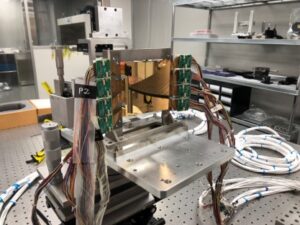 X-ray telescopes are critical for studying a myriad of high-energy sources: black holes, hot plasma surrounding galaxies, and the atmospheres of stars. Given this, the 2020 Decadal Survey on Astronomy and Astrophysics, which guides the science priorities of NASA’s Astrophysics Division, recommended an X-ray flagship mission for launch in the 2040’s. However, the Astrophysics Division’s Biennial Technology Report identified X-ray mirrors needed for such a mission as a Tier 1 (“highest priority”) technology gap.
X-ray telescopes are critical for studying a myriad of high-energy sources: black holes, hot plasma surrounding galaxies, and the atmospheres of stars. Given this, the 2020 Decadal Survey on Astronomy and Astrophysics, which guides the science priorities of NASA’s Astrophysics Division, recommended an X-ray flagship mission for launch in the 2040’s. However, the Astrophysics Division’s Biennial Technology Report identified X-ray mirrors needed for such a mission as a Tier 1 (“highest priority”) technology gap.
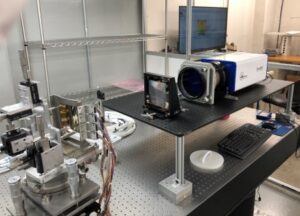 Current methods of X-ray mirror fabrication create significant figure distortion and degrade mirror performance. My research project will contribute to the maturation of two adjustable X-ray optic technologies aimed at closing this technology gap. Both concepts will use thin-film piezoelectric actuators deposited on the back of a mirror. When supplied a voltage, these actuators bend the mirror’s shape locally. Utilizing an array of actuator cells across the mirror’s surface, we can induce more complex figure changes. With high precision optical metrology, we can measure and apply a deterministic figure correction to the mirror, increasing its angular resolution. The first technology uses lead zirconate titanate (PZT) for the piezoelectric material, while the second concept will use electroactive polymers. Electroactive polymers can be processed at lower temperatures than PZT, making X-ray mirrors less susceptible to deformation from thermal stress. However, electroactive polymer actuators are currently at a lower technology readiness level than PZT. High precision metrology will be used to characterize not only the dynamic range of these technologies, but ultimately their performance at figure correction.
Current methods of X-ray mirror fabrication create significant figure distortion and degrade mirror performance. My research project will contribute to the maturation of two adjustable X-ray optic technologies aimed at closing this technology gap. Both concepts will use thin-film piezoelectric actuators deposited on the back of a mirror. When supplied a voltage, these actuators bend the mirror’s shape locally. Utilizing an array of actuator cells across the mirror’s surface, we can induce more complex figure changes. With high precision optical metrology, we can measure and apply a deterministic figure correction to the mirror, increasing its angular resolution. The first technology uses lead zirconate titanate (PZT) for the piezoelectric material, while the second concept will use electroactive polymers. Electroactive polymers can be processed at lower temperatures than PZT, making X-ray mirrors less susceptible to deformation from thermal stress. However, electroactive polymer actuators are currently at a lower technology readiness level than PZT. High precision metrology will be used to characterize not only the dynamic range of these technologies, but ultimately their performance at figure correction.
Abigail Whittemore – Drake University
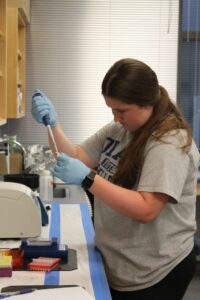 A big concern for the health of astronauts and space crews is exposure to radiation and NASA lists “Risk of Radiation Carcinogenesis from Space Radiation” as one of its top research priorities. On Earth, we are protected from most space radiation by the atmosphere, but radiation increasingly affects those outside of Earth’s atmosphere and beyond low Earth orbit. Ionizing radiation damages DNA most commonly via phosphodiester backbone breakage. Humans can repair these damages, but prolonged exposure can lead to genomic instability and cancer. Thus, it is important to understand and monitor genome stability of astronauts during space travel. Therefore, our main goal is to develop biomarkers of radiation-induced DNA damage for monitoring genome stability of astronauts during and after space travel, thus contributing to safer space exploration. Previously, we have analyzed signal transduction DNA damage repair pathway genes in human mammary tumor cell lines. However, skin cancer is also a major concern due to radiation exposure, and understanding DNA repair pathways in skin cancer is equally important. Therefore, using the human skin cancer cell line HTB-72 and doxorubicin as a radiomimetic model, we will investigate how the oncoprotein BRAF responds to radiation-induced DNA damage. The data produced from this project will help us understand differences between the development of breast cancer and skin cancer.
A big concern for the health of astronauts and space crews is exposure to radiation and NASA lists “Risk of Radiation Carcinogenesis from Space Radiation” as one of its top research priorities. On Earth, we are protected from most space radiation by the atmosphere, but radiation increasingly affects those outside of Earth’s atmosphere and beyond low Earth orbit. Ionizing radiation damages DNA most commonly via phosphodiester backbone breakage. Humans can repair these damages, but prolonged exposure can lead to genomic instability and cancer. Thus, it is important to understand and monitor genome stability of astronauts during space travel. Therefore, our main goal is to develop biomarkers of radiation-induced DNA damage for monitoring genome stability of astronauts during and after space travel, thus contributing to safer space exploration. Previously, we have analyzed signal transduction DNA damage repair pathway genes in human mammary tumor cell lines. However, skin cancer is also a major concern due to radiation exposure, and understanding DNA repair pathways in skin cancer is equally important. Therefore, using the human skin cancer cell line HTB-72 and doxorubicin as a radiomimetic model, we will investigate how the oncoprotein BRAF responds to radiation-induced DNA damage. The data produced from this project will help us understand differences between the development of breast cancer and skin cancer.
Jonathan Percy – University of Iowa
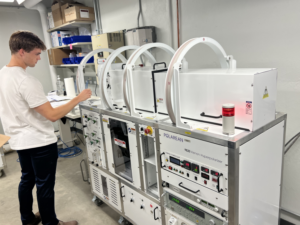 Medical imaging serves a crucial role in establishing diagnosis, determining severity, monitoring progression, and uncovering the pathophysiology associated with many diseases. This research, led by Dr. Sean Fain, explores novel applications of hyperpolarized (HP) 129Xe magnetic resonance imaging (MRI) in populations including those suffering from Long Covid, cystic fibrosis, interstitial lung disease, and radiation-induced pulmonary changes associated with radiation therapy. This technique differs from standard imaging practices today while measuring lung function more directly than conventional pulmonary tests delivering quantitative measures of ventilation, perfusion, and gas exchange of the lungs. After more research, these novel biomarkers could possibly guide adjustments to treatment and deployment of potential therapies to improve outcomes.
Medical imaging serves a crucial role in establishing diagnosis, determining severity, monitoring progression, and uncovering the pathophysiology associated with many diseases. This research, led by Dr. Sean Fain, explores novel applications of hyperpolarized (HP) 129Xe magnetic resonance imaging (MRI) in populations including those suffering from Long Covid, cystic fibrosis, interstitial lung disease, and radiation-induced pulmonary changes associated with radiation therapy. This technique differs from standard imaging practices today while measuring lung function more directly than conventional pulmonary tests delivering quantitative measures of ventilation, perfusion, and gas exchange of the lungs. After more research, these novel biomarkers could possibly guide adjustments to treatment and deployment of potential therapies to improve outcomes.
